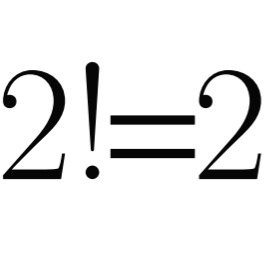이번 글에서는 명제논리에서의 치환에 대해 다룰 것이다. 일단 치환에 대해 정의하기에 앞서 다음 정의를 보자.
Definition 1.
| wff 에 대하여 가 의 부분문자열이라고 하자. 만약 역시 wff라면 를 의 Subformula라고 한다. |
이해를 돕기 위해 예를 들자면, wff 에 대하여 와 은 모두 의 부분문자열이지만, 는 의 subformula이고 는 의 subformula가 아니다.
명제논리에서의 치환은 다음과 같이 정의된다.
Definition 2.
| wff 가 wff 의 subformula라고 하자. 이때, 에서 의 위치에 대신 wff 를 집어넣어서 만들어진 새로운 wff를 와 같이 나타내며, 이를 에서 를 로 치환한 wff라고 한다. |
이렇게 정의된 치환에 대하여 다음 정리가 성립한다.
Theorem 1.
Proof.
임의의 Boolean Interpretation 를 생각하자. 그러면 와 가 tautologically equivalent하므로 라는 것을 기억해 두자.
만약 위의 조건 아래에서 임을 보인다면 의 선택이 임의적이므로 정리가 증명된다.
이를 수학적 귀납법을 이용하여 보일 것이다.
를 를 subformula로 가지는 의 subformula의 개수로 정의할 때, 에 대한 귀납법을 생각하자.
먼저, 일 때를 생각하자. 만일 이라면, 이다. 따라서 임을 즉시 알 수 있고, 임으로부터 임이 자명하다.
인 모든 경우에 대하여 정리가 성립한다고 가정하고 일 때에도 성립함을 보이자.
그러면 인 경우와 인 경우의 두 가지 경우로 상황을 나눠서 생각할 수 있다.
만약 이라면, 이므로 귀납가정에 의해 이다. 따라서 의 정의와 라는 사실으로부터 임을 얻을 수 있다.
만약 라면, 임을 자명하게 알 수 있다. 이때, 임이 자명하므로 귀납가정에 의해 , 이다. 따라서 의 정의에 의해 이다.
따라서 수학적 귀납법에 의해 에 관계없이 이며, 이로 인해 와 는 tautologically equivalent하다.








